How to Identify a Problem

- Learn what a problem is.
- Learn what a solution is.
- Recognize expressions of desire.
- Capture the problem.
How to Recognize Expressions of Desire
At the heart of every problem is desire.
The key to discovering problems lies in recognizing expressions of desire—concise statements that reveal what a sentient entity wants, needs, or believes should be different. These expressions are the building blocks for understanding all problems because they articulate a desired potential state of something.
People share desires constantly with their speech, body language, and writing. They might say things like "I don't like...", "I need...", "The team should...", "We believe...", "I would like...", and more. They can also express desires more subtly, for instance through exclamations or rhetorical questions pointing to dissatisfaction or frustration.
Whenever you notice someone expressing a desire—whether explicitly or implicitly—take note. These observations will help you uncover underlying problems.
Example Expressions of Desire
Personal Expressions
- ”I want my car to start reliably.”
- ”I need my phone to charge faster.”
- ”I wish I could spend more time with my family.”
Workplace Expressions
- ”We need our meetings to be more productive.”
- ”We wish we had clearer goals for this project.”
- ”Our team should communicate better.”
Subtle Expressions
- ”This process takes too long!” (Desire for efficiency)
- ”Why can’t I ever find my keys?” (Desire for organization)
- ”This app is so confusing!” (Desire for simplicity)
How to Capture a Problem
After you recognize an expression of desire like when your friend Sally says, “I wish John’s car was properly maintained.”*, write it down using one of these formulas:
- For Problems:
[Sentient entity] want(s) [thing] [potential state]. - For Potential Problems (Solutions):
[Sentient entity] could want [thing] [potential state].
Problem Lineage Example
- Sally wants John’s car to be properly maintained.
Icon Reference:
- = Initially Identified Problem
